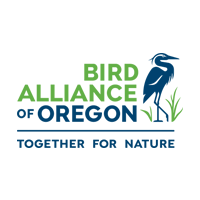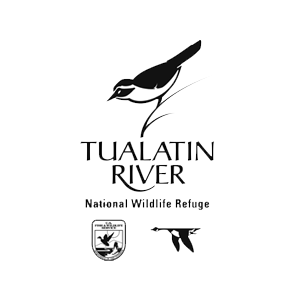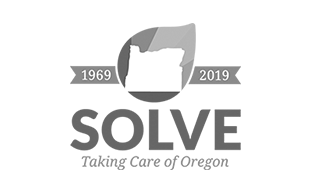Water, Wildlife, and People: Integrating across the Floodplain
The Rock Creek Floodplain Enhancement project enhances 115 acres of floodplain habitat in close proximity to new urban development. Near the juncture of Portland, Hillsboro, and Beaverton, the unique site integrates urban, rural, and ecological communities across a natural and dynamic floodplain on the campus of Portland Community College (PCC), not far from the expanding North Bethany neighborhood. PCC faculty members from several departments, including Biology, Environmental Studies and Environmental Landscape Technology, are working to maximize the educational and ecological potential of the site. The Bird Alliance of Oregon and The Wetlands Conservancy are engaging students and local residents in new community science programs. The land and waters of the site tie together an intact stream corridor with diverse wetlands and upland forests. On a broader scale, this project is a major connection between Abbey and Rock Creeks, further safeguarding an important fish and wildlife passageway. The healthy stream and riparian ecosystem supports beaver, river otter, red-legged frogs, steelhead salmon, neotropical migrant songbirds, bobcat and Roosevelt elk, to name a few.
The Site
First planting: 2018
Size: 115 acres
Stream length: 5,214 feet
Total Plants to date: 104,000
Plant Communities: Emergent Marsh, Scrub Shrub Wetlands, Forested Wetlands, Oak Woodland, Riparian Forest, Upland Forest
The Challenge
Decades of agricultural use including grazing and installation of a drainage ditch resulted in a degraded floodplain dominated by invasive reed canarygrass (Phalaris arundinacea). In fact, historic maps from more than 100 years ago show cleared areas and ditches at the site. New urban development bordering the site also creates potential for increased runoff. For these reasons and more, the site needed significant improvements in hydrology, water quality and wildlife functions.
The Transformation
The project design emphasizes restoration of watershed processes and working with Mother Nature to restore the site. The design involved a number of actions to enrich the character of the stream, including installing over 250 logs and snags within the wetland to slow and spread the flow of water throughout the floodplain; planting a variety of native vegetation; and letting the beaver population get to work. These steps have provided additional food and nesting habitat for fish and wildlife, particularly for the beavers. Increasing water storage capacity and connection to groundwater will extend ponding and saturated soil conditions longer into the dry summer season. Habitat has been improved as well by converting the emergent wetlands that are overrun by invasives into a dynamic mosaic of forested, scrub-shrub and emergent wetlands dominated by native species. Foresters thinned a portion of the floodplain forest to release Oregon white oaks from encroaching ash and cherry trees. This expanded the oak woodland plant community and created more snags and downed wood in the forest. These large, connected areas along Rock Creek provide essential refuge for people and nature even as the urban world expands into this rural part of the basin.
Invasive species management began in 2013 and the first planting took place in winter 2017-18. As a result of the major restoration effort, students and community groups are increasing their connection to the site through integrated learning opportunities and stewardship activities like amphibian egg mass surveys, bird counts and native tree and shrub planting. These efforts build upon several decades of faculty and student involvement in research and stewardship through the PCC Rock Creek Environmental Studies Center. Hundreds of students and community members have joined into the project by removing invasive plants, installing native plants, monitoring habitat quality, and conducting specialized research, including water quality, microclimates, photography and herbarium collections. Progress will continue at the site as partners monitor native plant communities, manage for invasives, and track wildlife activity.
With support from the Metro Nature in Neighborhoods grant program, Bird Alliance of Oregon, Friends of Trees and The Wetlands Conservancy have brought new partners to the site and are delivering integrated educational and hands-on restoration programming to a broader group of community members through partnerships with Adelante Chicas, as well as neighbors in the growing North Bethany neighborhood. Such community outreach has enabled the project to connect diverse youth interested in learning more about nature to the PCC campus and their education programs through involvement in tree planting, wildlife monitoring and stewardship.










































